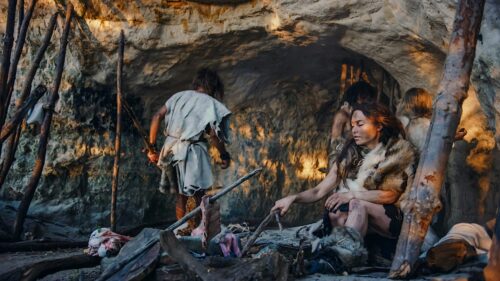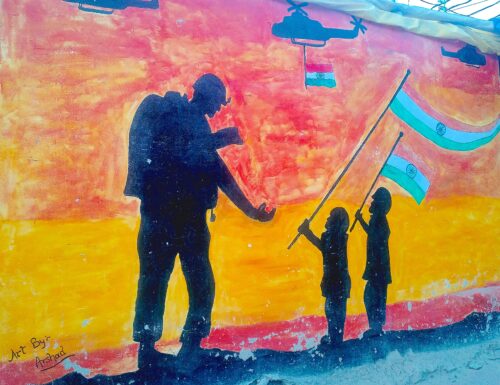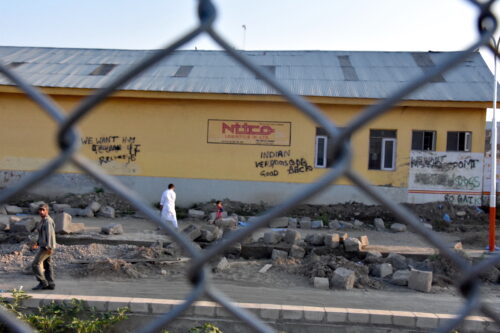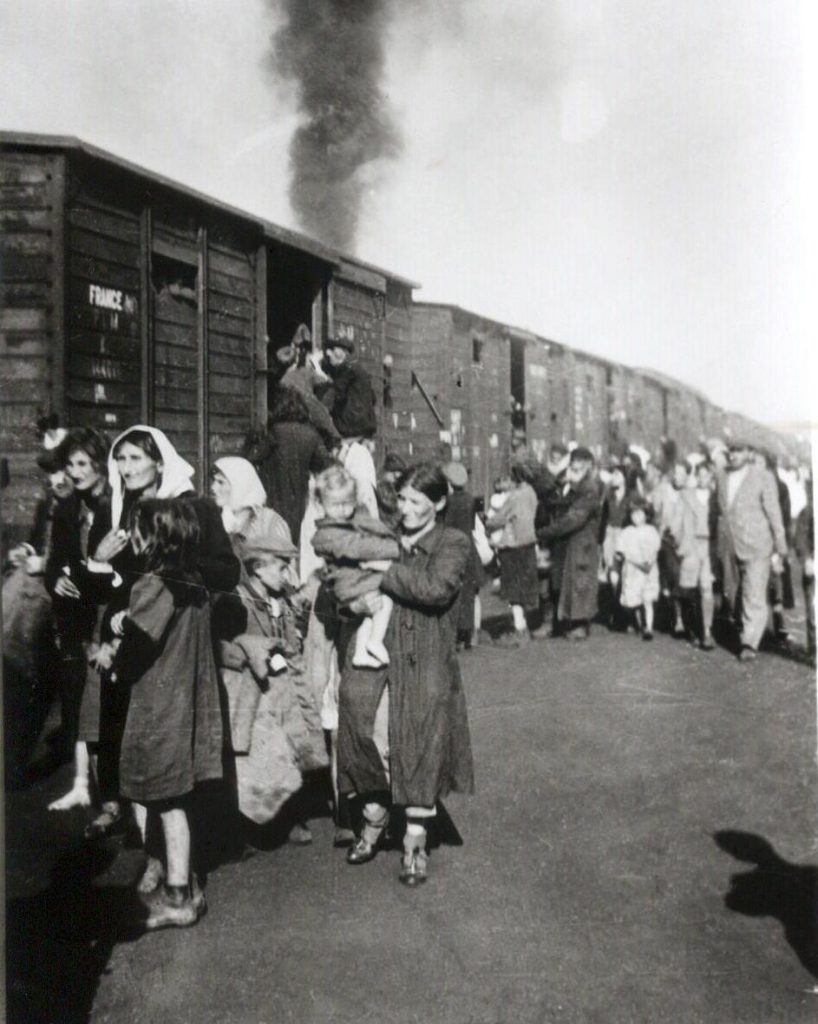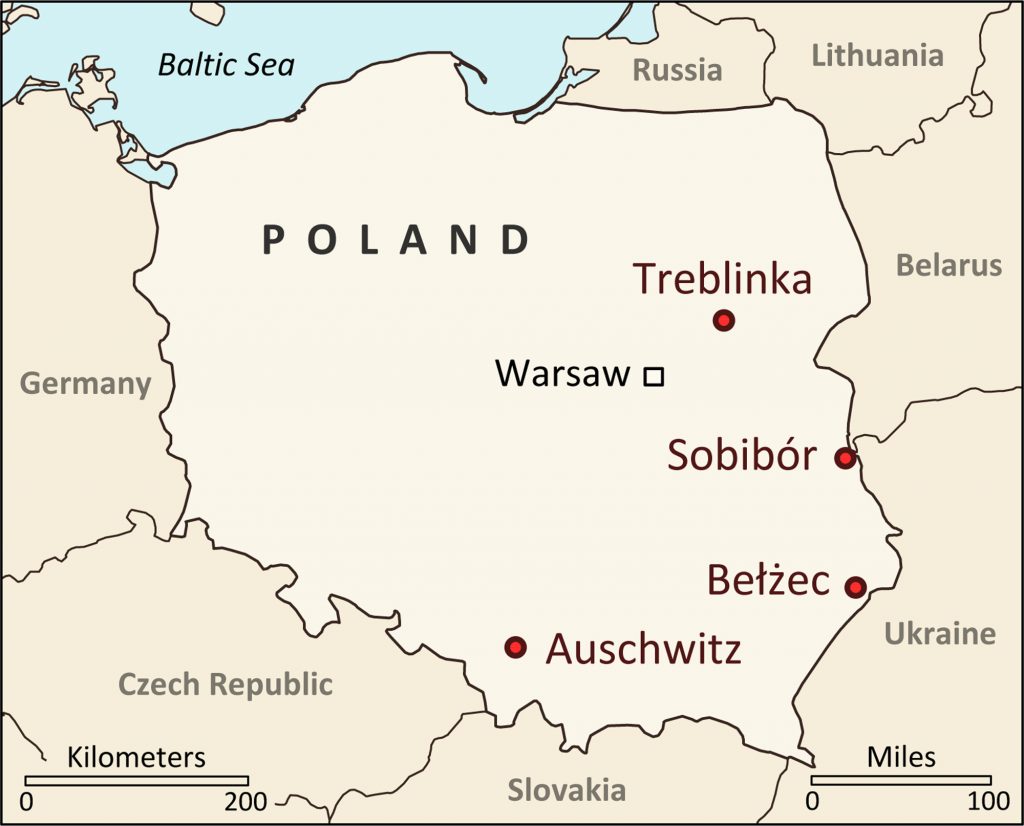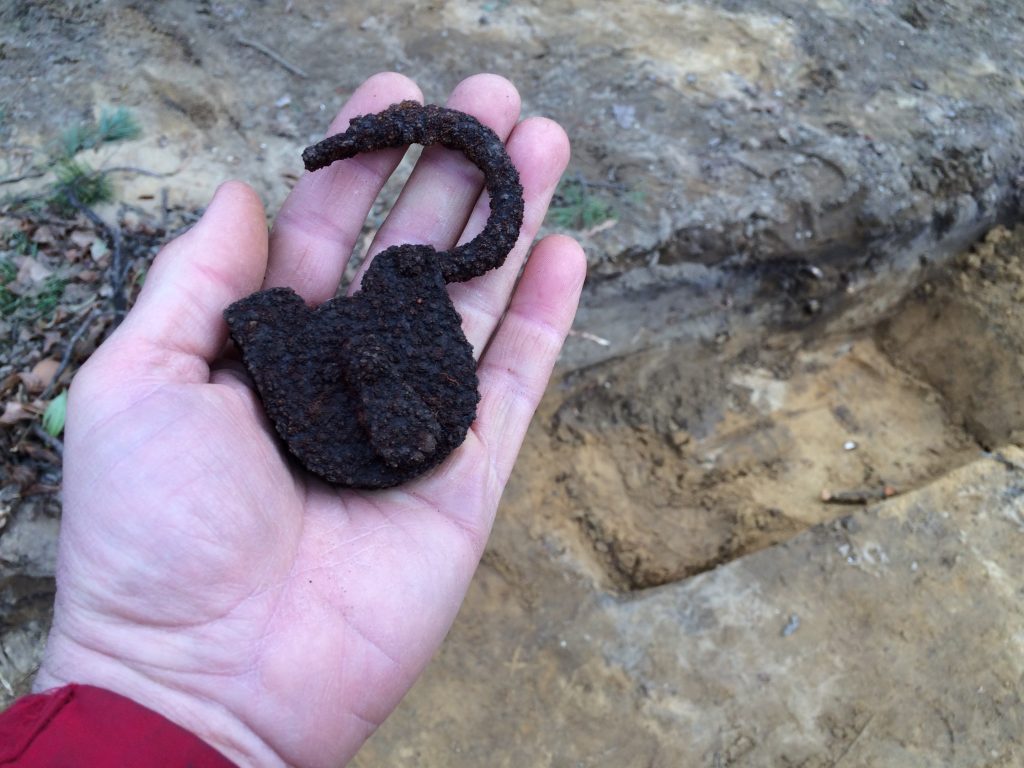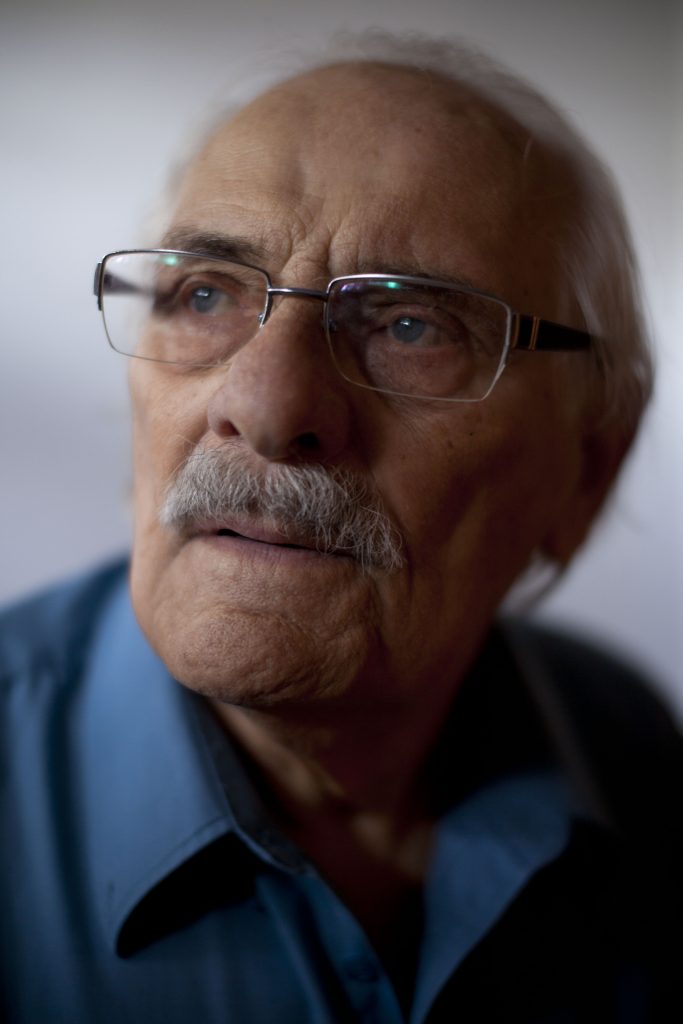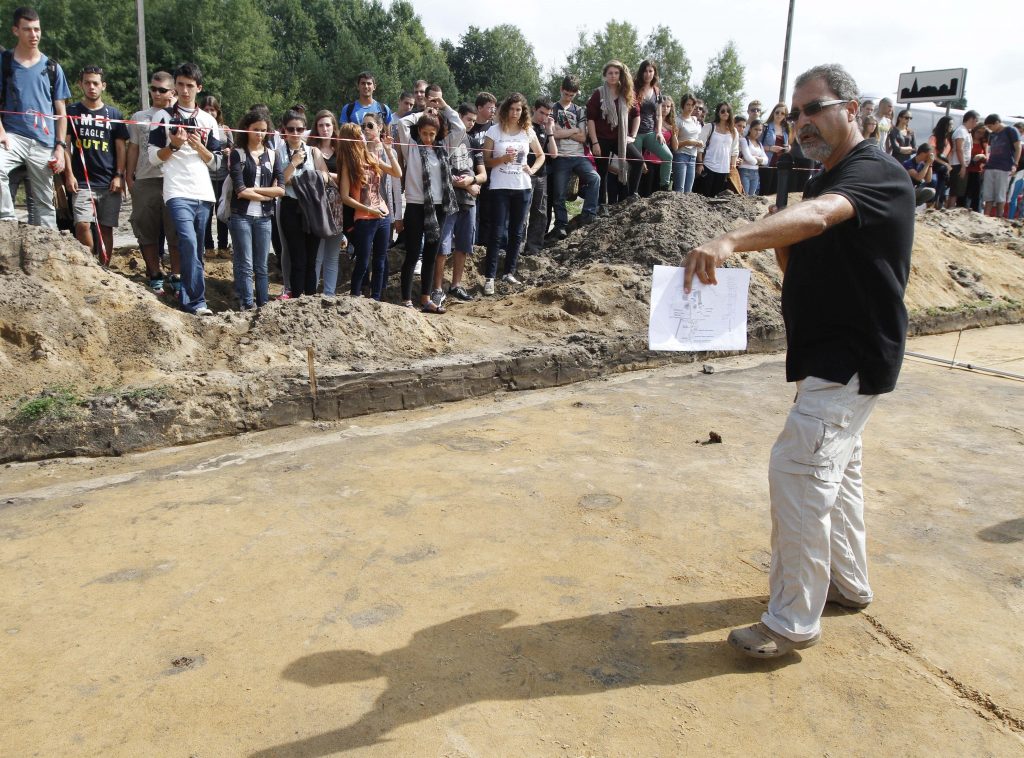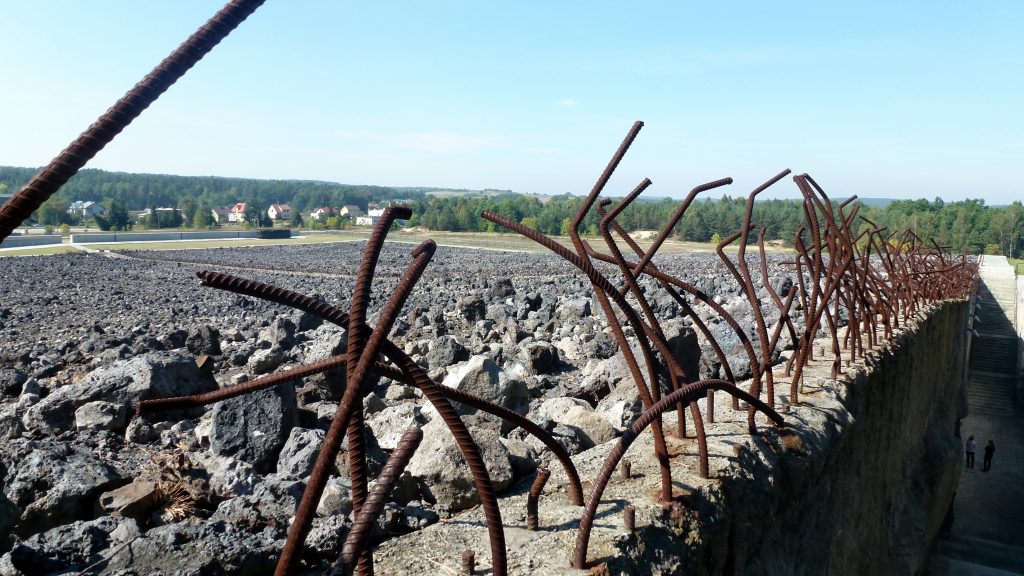The Darkest Truths
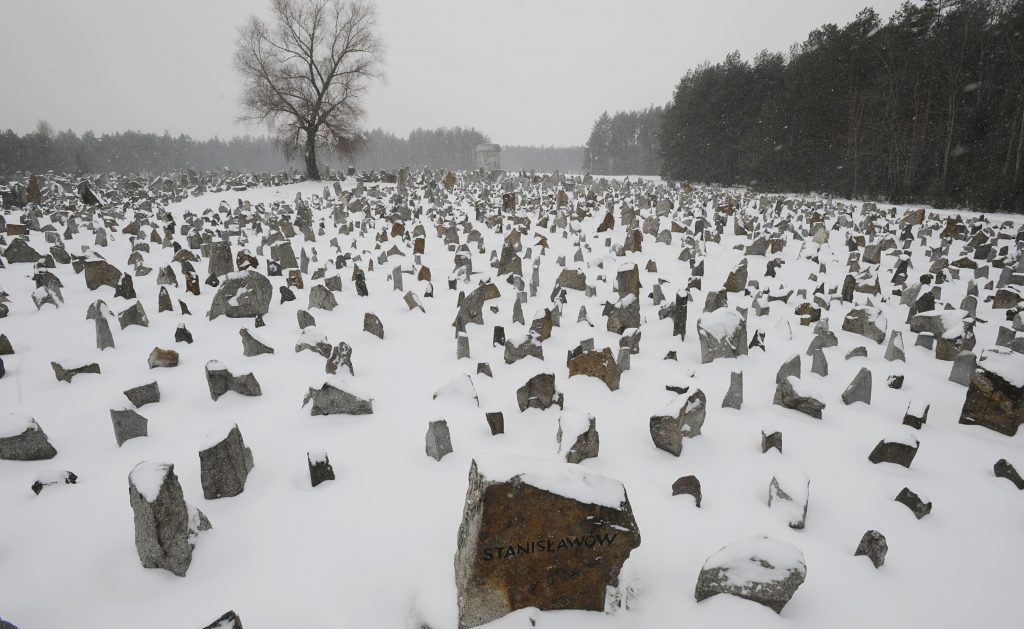
In 2007, Caroline Sturdy Colls—then a 21-year-old University of Birmingham graduate student—made her first visit to the Nazi death camp at Treblinka, Poland. As a prospective forensic-archaeology scholar, Sturdy Colls was learning the science of uncovering remains and trace physical evidence to outline the true facts of a crime. As she gazed out across the camp site, studded with pine trees the Nazis had planted to hide evidence of their deeds, Sturdy Colls asked herself a nagging question: What secrets did the forested earth around her hold?
During the Second World War, Sturdy Colls knew, more than 900,000 Jewish deportees had been killed at the Treblinka death camp, an unassuming site about the size of a suburban shopping mall. After closely guarded boxcars of arrivals passed through the gates of Treblinka or its sister camps, Bełżec and Sobibór, it took less than an hour for camp staff to exterminate them in engine-exhaust gas chambers. All three of the Operation Reinhard camps were located within a few hundred miles of each other in formerly central (now eastern) Poland, and some 500 miles from the notorious Auschwitz death camp. Of the approximately 1.7 million Jewish people who arrived at the three Reinhard camps, scarcely a hundred survived the war, and they only made it because they staged desperate breakouts that succeeded against all odds.
Bełżec, Sobibór, and Treblinka have receded into the historical background compared to Auschwitz, likely because the Nazis razed all three Reinhard camps and buried or burned the corpses long before the advancing Red Army overtook the area. At Auschwitz, Soviet liberators found gas chambers and thousands of inmates, skeletal but still alive; at the Reinhard sites, there was little to see but open fields and twists of barbed wire embedded in trees. Since the Nazis destroyed most written records and so few Reinhard prisoners survived, previous studies of the sites have leaned heavily on the firsthand testimony of just a handful of prisoners and perpetrators—which, while important, conveys only certain aspects of what happened at the camps.
To most people who knew about the camps, it seemed few traces of the Nazis’ crimes remained. But Sturdy Colls, now an associate professor of forensic archaeology at Staffordshire University in the United Kingdom, suspected hidden evidence lurked underground, just waiting to be exposed. “There was a feeling,” she says, “that Treblinka had been erased off the face of the earth. I just couldn’t believe that could actually be true.”
Several years after her initial visit, Sturdy Colls—this time with a trained archaeological team in tow—tackled the herculean task of probing into Treblinka’s buried past. Around the same time, a team of archaeologists from Israel and Poland began carrying out similar excavations at the Sobibór death camp, where the Nazis killed about a quarter of a million Jewish people.
With assistance from noninvasive technologies like low-altitude weather-balloon photography, ground-penetrating radar, the Global Positioning System (GPS), and a remote-sensing method called lidar, archaeologists at places like Treblinka and Sobibór are unearthing a trove of new physical evidence. “The key thing is that we have these methods available to us,” Sturdy Colls says. “If you were a police officer, you would never just go and interview witnesses. You would always go to the crime scene.” At both camps, the teams have found a startling array of everyday items and personal keepsakes, as well as the rubble of the gas chambers where unsuspecting victims met their end. But in their quest to use science to illuminate a dark past, archaeologists have clashed with a diverse set of detractors—Holocaust deniers, as might be expected, but also Jewish religious authorities, memorial planning committees, and scholars concerned about the sites’ integrity and the importance of respecting human remains.
The controversy that surrounds the investigations raises vital questions: How necessary is it to turn an exacting new lens on long-buried atrocities? And how can researchers strike an ideal balance between honoring the dead and gathering knowledge for future generations?
After seeing Treblinka for the first time, Caroline Sturdy Colls felt a persistent pull to go back to the site. For years, she’d been committed to truly understanding what had happened in the Holocaust. As a young teenager, she’d met several survivors, and while working at her local library, she pored over the survivor testimonies she found, struggling to wrap her mind around the immensity of the Nazis’ crimes.
“I couldn’t imagine the suffering of people involved in the Holocaust—both those who died and those left behind,” says Sturdy Colls. Her forensic archaeology training qualified her to revisit the seemingly cold case of Treblinka, and she felt a growing obligation to reopen it. “There was something about the contrast between the way the site looks now and the reality of what happened there [that] really made me want to investigate the crimes further.” In addition to uncovering key historical details, she hoped she could give victims’ surviving family members some closure by revealing what had happened to their relatives.
When Sturdy Colls returned to Treblinka, she opted to start with a noninvasive survey of the site, mindful of the sensitive nature of the work she’d undertaken. Using the aerial laser scanning technology lidar, she and her team precisely measured distances between the surface of the ground and a reference point in the air, revealing detailed outlines of areas where human activity had most likely disrupted the soil. “Lidar allows you to strip away the vegetation—you’re basically left with a kind of bare topographic model,” Sturdy Colls says. The model the team generated showed several likely mass-grave sites at the labor camp on the Treblinka site. At the neighboring death camp, the archaeologists performed ground-penetrating radar scans, which can detect changes in the properties of underground material. Soil, for instance, looks different on the finished scan than sand or brick. These scans helped them estimate the locations of former mass graves and buildings, including one they suspected had housed the camp’s first gas chambers.
Background data from the remote-sensing investigations gave the team a much better idea of where they should start digging. They soon unearthed some remarkable buried secrets, including personal possessions like jewelry and utensils, the brick foundations of the gas chambers, and tiles that probably covered the chambers’ floors. Within months, a near absence of physical evidence had turned into an abundance.
Sturdy Colls will never forget how she felt when she began digging in the area of the gas chambers, turning up items that had been hidden for decades. “It was a surreal experience,” she reflects. “I’d expected we were going to find the building foundations, but what I didn’t expect was all the other material.” Just steps from the gas chambers’ location, Sturdy Colls and her team found an array of brooches, hairbands, and rings—some of which were presumably pressed into the ground by victims who did not want them to fall into Nazi hands. “It would have been a great personal risk that they would have smuggled those kinds of items in.” As she stood there looking down at the trench, one of her colleagues remarked that it was “like a window into the hell of what happened there.”
The team also found 114 terra cotta floor tiles—some whole and some in fragments—near the gas-chamber foundations, which they were able to trace to a construction firm that produced a type of tile known to be used in Jewish buildings during the World War II era. Sturdy Colls suspects this choice may reveal calculated Nazi attempts to deceive arriving Jews. “We think they selected these tiles because they were used in Jewish ritual baths—to convince [the victims] that they were just going to have a shower.”
At the even lesser-known camp of Sobibór, a pair of archaeologists—one Polish, one Israeli—has likewise compiled hard evidence over the past few years, adding to the previous record of testimony and conjecture. Yoram Haimi, the archaeology team’s Israeli head, was inspired to carry out the project because two of his uncles died at the camp. Along with his Polish colleague, Wojciech Mazurek, he negotiated with various officials and ultimately secured permission from the Polish government to start investigating the site.
The Sobibór archaeologists used a combination of traditional and less-invasive technologies in their search. They carried out low-altitude aerial photography with a weather balloon in order to detect landscape features and the borders of mass graves. Meanwhile, local crews scooped up large wheelbarrows full of dirt, which they sifted through fine mesh screens to reveal small artifacts. The result of all this painstaking work was a series of heart-stopping finds that added vivid detail to existing historical narratives about Sobibór.
The team’s first major find, in 2011, was two parallel rows of fence posts that took a 90-degree turn near the end. The lines of posts were located where survivors said there was a narrow barbed-wire path that led to the gas chambers—a path the Germans sardonically called the Himmelstrasse, or the “road to heaven.” Finding this path, Mazurek says, was part of what allowed the team to plan future phases of the excavation. “We knew it should be very close to the gas chambers.”
There was just one problem: The site where they thought the gas chambers were located was under a thick expanse of blacktop that had been laid in the 1960s. Since the asphalt was near possible grave sites, Haimi and Mazurek waited for Poland’s chief rabbi, Michael Schudrich, to give his blessing for them to dig. But once permission came, they were able to uncover exactly what they’d suspected: demolished brick walls several feet underground, almost certainly the foundations of Sobibór’s gas-chamber building. “The Germans didn’t destroy everything of the remains,” Mazurek says.
The team also uncovered an escape tunnel that prisoners began digging but never used. This is an especially notable find, Mazurek says, as the tunnel was found in the area of Sobibór’s Camp III, from which no inmates ever emerged alive. (As the extermination and cremation area, Camp III was under heavy guard and cut off from the rest of the camp; its inhabitants could not take part in the well-known prisoner revolt of October 1943, when about 300 inmates managed to escape—most were later caught and did not survive the war.) The tunnel’s existence had never been confirmed until the archaeologists found it. With the inhuman conditions and grim odds the Camp III workers faced, Mazurek knows what a challenge it must have been for them to try to dig their way out: The Germans put barbed wire about 4.5 feet (1.4 meters) underground, he says, to prevent the inmates from escaping. “It was so difficult. Most important [is that] they tried to do it, and for everybody coming here I think it’s necessary to know the story.”
Throughout their investigation, the team uncovered dozens of artifacts, including a metal identification tag that once belonged to a young Portuguese-Dutch girl named Lea Judith de la Penha. Since this discovery, Spiegel reports, Dutch filmmakers produced a documentary about the de la Penha family—a development that underscores the role archaeology can play in humanizing individual victims. “It was very sensitive for us, to touch these objects that belonged to the people,” Mazurek says. He hopes some of the team’s finds can be incorporated into future museum displays at Sobibór.
The new excavations at Treblinka and Sobibór have taken on profound significance, because for many years there has been so little visible evidence of what happened at the camps. The excavation teams hope their work will help convey the importance of these little-known camps. “That’s where archaeology has great power,” Sturdy Colls says. “It shows people a side of the history you can’t get just from reading documents.”
With fewer and fewer living witnesses to Operation Reinhard, survivor testimonies are increasingly hard to come by, and while such testimonies are exceedingly valuable, they may be incomplete or contradictory. But the artifacts and structures Sturdy Colls, Mazurek, and their colleagues have found give rise to a historical narrative that’s less open to interpretation or doubt. “There isn’t a great deal of German documentation of these camps. Although there were trials of some of the staff that worked there, [they] didn’t yield this detail,” says David Silberklang, senior historian at Yad Vashem’s International Institute for Holocaust Research in Jerusalem, Israel. “This kind of clear, hard evidence contributes to adding veracity.”
Even so, archaeologists have met with resistance from a variety of sources as they have worked to expand our knowledge about these camps. One group of dissenters, predictably enough, is Holocaust deniers, who seem affronted by the gathering of physical evidence to describe atrocities they insist never occurred. Sturdy Colls, in particular, has weathered many online attacks from impassioned neo-Nazis, which she has come to see as an inevitable side effect of her work. No matter what new evidence is presented, she says, “the people who are vehemently deniers will always say the Holocaust didn’t happen.”
Other objectors, though, have included Jewish religious leaders and orthodox practitioners. Traditional Jewish law dictates that graves should not be opened, and these observers feel uneasy about researchers digging near killing sites where human remains might be disturbed, although they may recognize the historical value of doing so. “Any time an archaeologist excavates human remains, there is an ethical dimension,” says Alexander Joffe, an archaeologist and historian who edits the e-newsletter The Ancient Near East Today. “Many religions define it as a sinful act to disturb the dead, and by and large it’s not a good thing to do. I don’t think humans deserve to end up in boxes on shelves against their will.”
There is ample precedent, in fact, for skeptics to be suspicious of researchers’ invasive techniques. More than 10 years ago, Polish archaeologists carried out a dig at Bełżec, the first of the Operation Reinhard camps, where the Nazis killed more than 434,000 Jews and an unknown number of Gypsies (Roma) and Poles, according to the U.S. Holocaust Memorial Museum. Afterward, the researchers fielded criticism about how they had handled human remains. Avi Weiss, the former head rabbi at New York City’s Hebrew Institute of Riverdale, wrote in the Forward at the time that “countless violations” had occurred at the site. “What did the drillers do when they hit bone or ‘wax-fat’? How did they dispose of the disturbed remains? Why did they continue to systematically and obsessively drill every few yards when they knew full well what lay under their feet?”
Mindful of the problems her predecessors had run into, Sturdy Colls was determined to take a more sensitive approach to her work, soliciting input from Jewish authorities along the way. She struck up a friendship with Schudrich so the two of them could work through whatever concerns might arise. During the initial phase of her investigation, she also stuck to noninvasive mapping methods, which allowed her to locate a number of major camp landmarks without lifting a shovel.
“We found the foundations of the gas chambers, and we went to the religious authorities and told them that. We knew where the mass graves were and we weren’t going there,” Sturdy Colls says. These initial assurances, she adds, helped the rabbis feel comfortable letting the team excavate around the gas chambers, as they were not located on top of a mass-grave site. “Because of the way these technologies respected the religious law, they actually facilitated the investigation.” When the team did come across unexpected human remains during their searches, they followed an agreed-upon procedure for re-interring the remains.
Haimi and Mazurek, too, have taken pains to conduct their Sobibór work in consultation with the chief rabbi and other religious advisers, a cooperative approach that has helped ensure the work’s continuation. Not all religious authorities are invoking an absolute prohibition on physical digging at these camps, which has allowed productive dialogue to take place between archaeologists and rabbis. “There’s a desire on the rabbis’ part that yes, this work get done—there’s a mutual desire to do it,” Silberklang says. “Here and there, questions might come up, but they deal with it.” While Joffe has deeply conflicted feelings about disturbing human remains, he says he’s come to believe—as many rabbis also have—that the historical value of limited investigations like those at the Reinhard camps helps outweigh the drawbacks. “There is a real scientific imperative to establish what has happened in order to complement what is now a textual record. This adds to our sum of knowledge.”
Archaeologists hoping to undertake future work at Operation Reinhard sites must also contend with the complication of new site memorials—some already installed, some still in the planning stages. After digs were carried out at Bełżec in the late 1990s, the site was covered with a massive monument of slag and granite that extends deep into the earth. This very act of commemoration, however well-intentioned, is now arguably keeping still-buried artifacts from being discovered at the site—a particular loss since there is almost no historical record of the camp, which had fewer than ten Jewish survivors.
When Mazurek and Haimi learned of Polish plans to build an extensive memorial at Sobibór, they were concerned that the memorial might interfere with further site study. The memorial design—which involved a mile-long wall that ran past mass graves—sparked some back-and-forth between the Polish Ministry of Culture, which had planned the memorial, and Israel’s Yad Vashem, which lobbied on behalf of the archaeologists. The commemoration group From the Depths, which represents many relatives of Holocaust survivors, also raised concerns that the memorial’s design did not respect the dignity of those buried at the camp. In May 2015, the planning team decided to slow down and reevaluate the project. Mazurek, who welcomes this decision, hopes it will allow more time to plan a memorial that both honors the victims and allows for future excavation work. “It’s a bit complicated,” he says. “I think the Polish government will want to do it in a compromise with the Israeli side.”
Meanwhile, Mazurek, Sturdy Colls, and their teams plan to press on with their work at Sobibór and Treblinka. Mazurek and Haimi want to continue digging several feet below ground to see how far Sobibór’s escape tunnel extends, since they are not sure of its complete length. They will also try to locate the remains of the notorious Lazarett, a mock hospital where sick people were shot after being told they would receive treatment.
Sturdy Colls has resumed her fieldwork after spending months installing a new public exhibition at Treblinka. Having uncovered the foundations of the camp’s original gas chambers, she wants to search for traces of a newer, larger gas-chamber building the Nazis erected to expand the camp’s killing capacity. More generally, she hopes to demonstrate the archaeological value of using noninvasive methods like lidar and high-resolution photography to explore sensitive areas—techniques that could be used at sites as diverse as the killing fields in Cambodia and World War II–era shooting trenches in Eastern Europe. “People assume that we need to find human remains because it gives closure, but that doesn’t apply in all religions or all cultures,” says Sturdy Colls. “At the same time, it might become important to find these sites, and noninvasive methods give you the ability to do that.”
It’s already clear that with input from these sophisticated methods, the archaeology teams at Treblinka and Sobibór are revealing aspects of the camps’ history that could not otherwise have been brought to light. Mazurek hopes that by conveying the truth about these lesser-known camps, he and his colleagues can help ensure that the camps’ tragic history will never be repeated. “Most important,” he says, “is for more and more people to know about this.”
This article was republished on ScientificAmerican.com





























